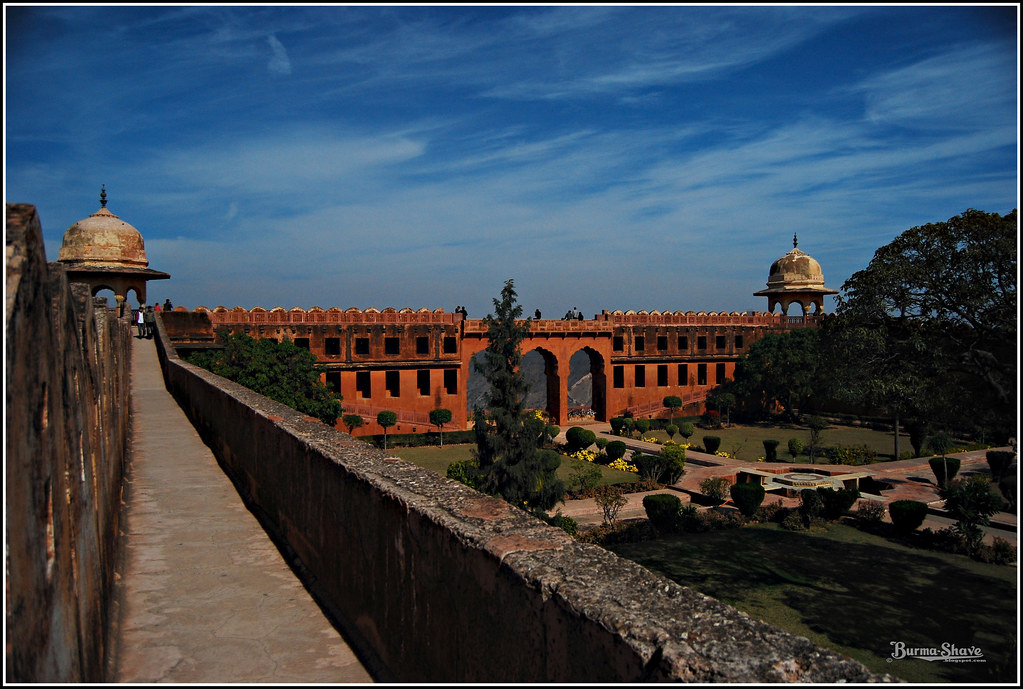
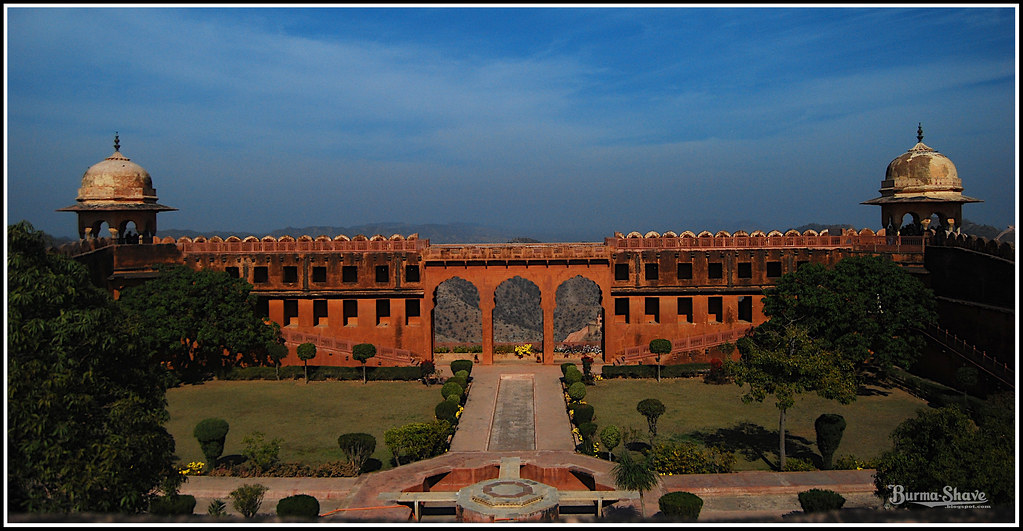
Located at the end of the Jaigarh fort overlooking the cliff down to Amber Palace is the Mughal Garden.
Framed by the two towers and the arches in the center, it a beautiful place and one can spend hours here.
Sadly, it is also one of the only areas in the fort where entry is restricted. You can manage to jump from the lower walls into the garden but I was not sure how I would get out so I didn't risk it!
How Beautiful
Jaigarh Fort

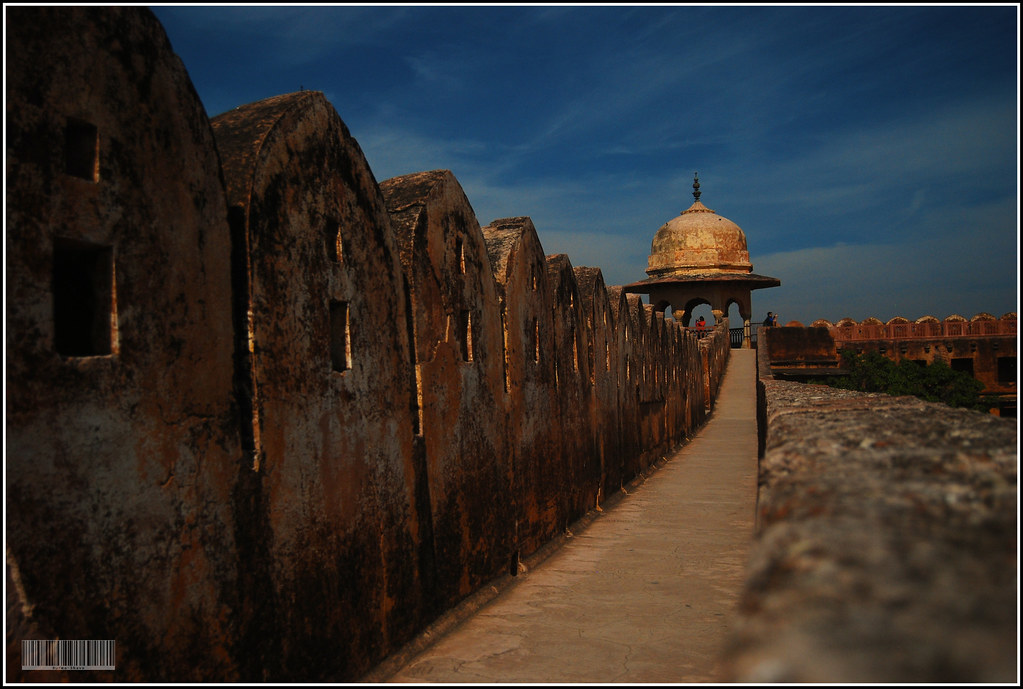
Jaigarh Fort is located on the crest of a hill and houses among other things, the armory and canon foundry.
It overlooks the Amber Palace which used to serve as the official palace before the royal family founded Jaipur and moved there. It has several palaces, expansive courtyards and beautiful gardens. The garden attached to the Aram Nivas is the most splendid. Pictures to follow soon.
The Magarh Chronicles
-a review
The Mangarh Chronicles is a book written by Gary Worthington and is sold internationally with the title – India Treasures. Before I actually get into the book, let me tell you about how I got around to reading it. I have recently started a trend of reading a fiction novel based on a certain region or area before I actually visit that place. You can call this a 'localized fiction' category of novels. What I really like about them is that it gives me a lot of background on the place without reading boring wiki articles or random travel websites. These novels immerse me in the surroundings and I feel at home when I actually arrive. Most of the other sources just state facts. What makes history interesting are the stories and they need to be told in such a way as to captivate the reader's interest. I believe this is why my high school History professor was such a great man. A lot of WWII is still alive in my mind thanks to him and the Biggles series of novels that I read then. But I digress, let us get into the actual review.
I was going to be visiting Rajasthan, Jaipur in particular and thought of reading a novel that is set in that region. The Mangarh Chronicles is set in the fictional city of Mangarh located in Rajasthan, written by Gary Worthington, and was one of the suggestions that Google and some other blogs gave me. Mangarh is loosely based on the city of Jaipur and the author even provides a graphic display of the old city, palaces and the fort for better understanding. The story revolves around Vijay Singh, a tax collector who is raiding the Maharaja of Mangarh and searching for hidden treasures that would not have been declared in his returns. No one is absolutely certain what the treasure contains but it is referred to as The Mangarh Treasure and is supposed to have been passed down through the generations. While Vijay Singh is trying to unearth the secrets of the Maharaja, there are some secrets of his own that he is trying to hide. He has been able to reach his current position in the tax department by masquerading as a Rajput, one of the highest castes in Rajasthan. He originally hails from a village near Mangarh itself and belongs to the ‘Harijans’ or ‘Untouchable’ caste. His whole life is based on this one lie and it is a secret that he wants to protect dearly. During the course of the raid, we also come to know about the Maharaja and his family, particularly his beautiful daughter Kaushalya Kumari who surprises Vijay with her deep understanding of the history of the area and sophisticated outlook. This game of intrigue and suspicion plays out in the backdrop of the Emergency which brings it’s own set of complications and powerful political characters like Dev Batra, a rude, crass politician who will stoop at nothing to get to the treasure and implicate the Maharaja.
But what really separates this novel from several other treasure hunt mysteries is the style of writing that juxtaposes the present and past and weaves wonderful short anecdotes and stories that are set in older eras but are related to the hunt for treasure. During the course of the search, Vijay Singh visits several places around Mangarh, each with it’s own history and several monuments and legends. At such times, the author takes us back in time and weaves a fictional yet endearing story around that historical event or legend. While these flashbacks are sometimes a little jarring to the narrative of the main story, they break the monotony of a single-track story and gives us hints to the glorious past of the region. I got so immersed in these small stories itself that for a moment I forgot about the treasure hunt against which it is set. Each of these historical anecdotes have clearly defined characters in the typical settings of that period. Like the little boy, Jimuta who goes on to become a mahout for one of Ashoka’s lead elephants and subsequently rises to a minister. Or Samudradutta, the merchant of Kashi who is distraught after losing both his sons to the path of Buddhism. Or the painter from Mauryan times who weeps so much for his beloved that he leaves behind one of his masterpieces in the caves of Ajanta. Each individual story creates a suspense that keeps the novel ticking. Worthington does mention in the footnotes that he created fictional characters and stories but they have been based on known and established events and characters in history. I would say that these stories are like interludes in a beautiful drama that is playing out in the background.
So how did I feel in Jaipur after reading this novel? It brought a lot of life to the stories that I read in the book, like watching a movie based on a novel but here you're actually starring in it! As I roamed the forts and palaces, I pictured the countless generations of the Maharajas and Maharanis it must have played host to, how their kids would have had so much fun roaming about the gigantic forts and getting lost in them. And of the kind of intrigue, plotting and politics that would have played out in the Darbars. I was certainly happy that I had read the book before going to Rajasthan.
That is not to say that you cannot read the book at other times. It is definitely a wonderful read though it may seem stretched in some portions. But it has been one of the best books that I would attribute to this new category of books that I have become so interested in. Some other books that I can think of are William Dalrymple's The Last Mughal and to a lesser extent White Mughals as well as Amitav Ghosh's superbly written The Glass Palace. Dalrymple's books are superbly researched and based firmly in history but he too manages to convey a beautiful picture of the cities of Delhi and Hyderabad while Amitav Ghosh paints such a pretty picture of Ratnagiri that I wanted to travel there the moment I put the book down. Gary Worthington is not a sucker for history, his aim is more to create a captivating story and he does a very good job of it.
The author has also written a sequel to this book called India Fortunes but I have not been able to lay my hands on it. The Mangarh Chronicles too is an old book that is not so easily available. I spent close to an hour in my library before I found a dusty copy of the book. Though I believe they are both readily available on flipkart.
Do let me know if you have some across such books that immerse you in a particular place or region and you found enjoyable.
Nahargarh Fort
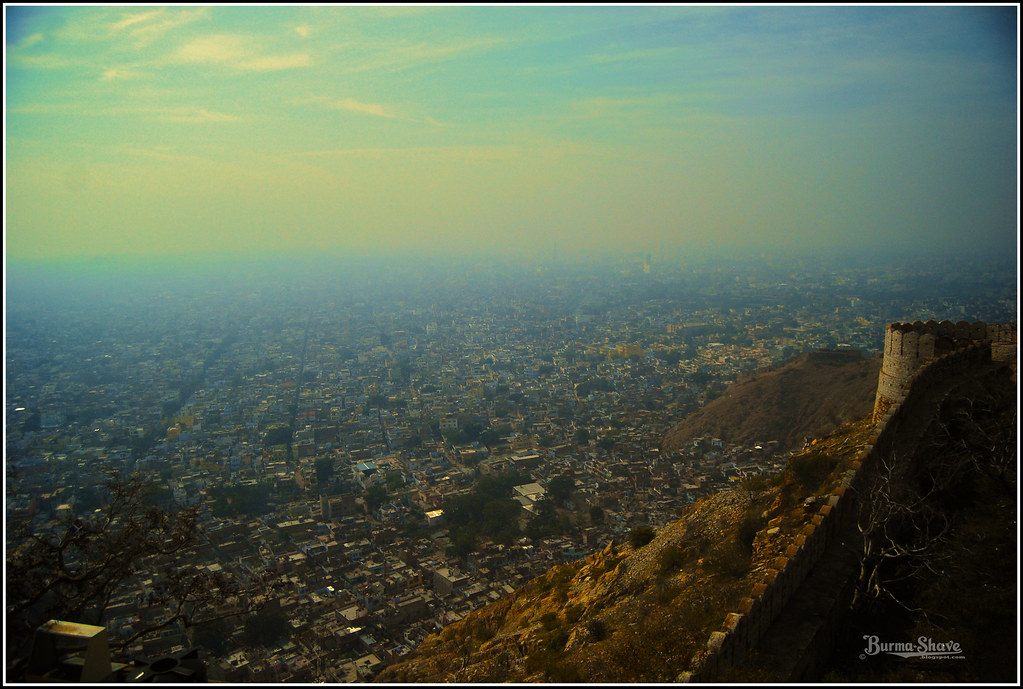
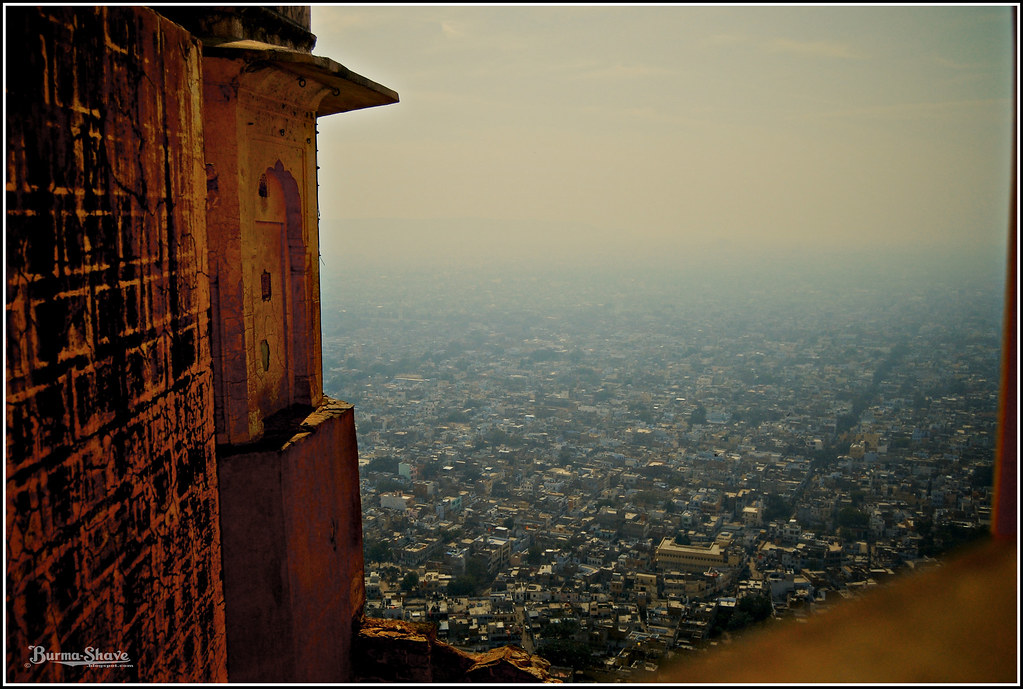
Perched on a cliff overlooking the city of Jaipur, you get wonderful views of the old city from here. On a clear day that is!
The fort is illuminated at night and along with the city lights makes for an amazing experience. Sadly, I did not have much time to spare for that. I went shopping :-)